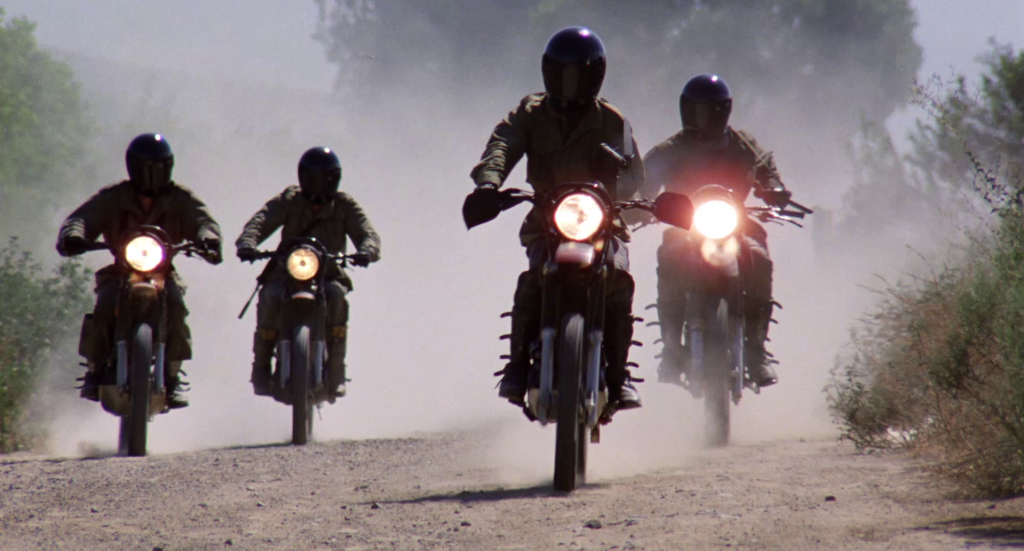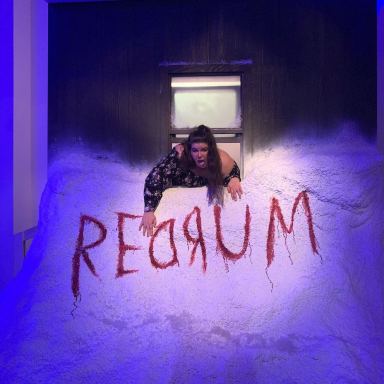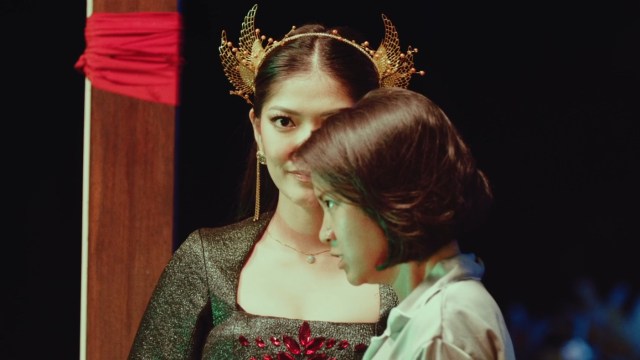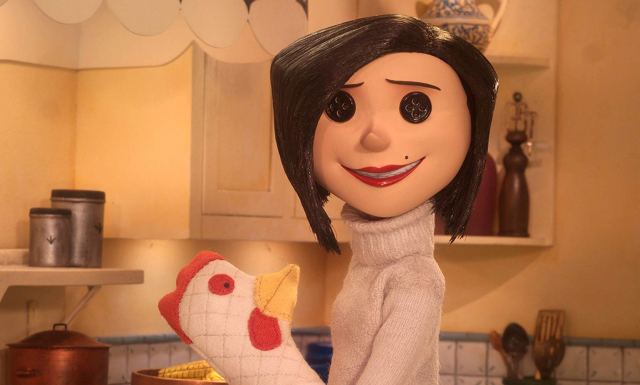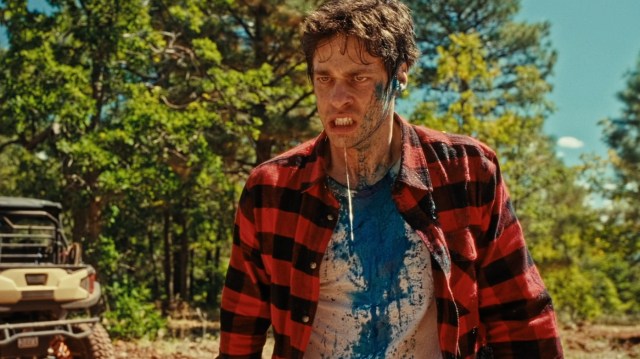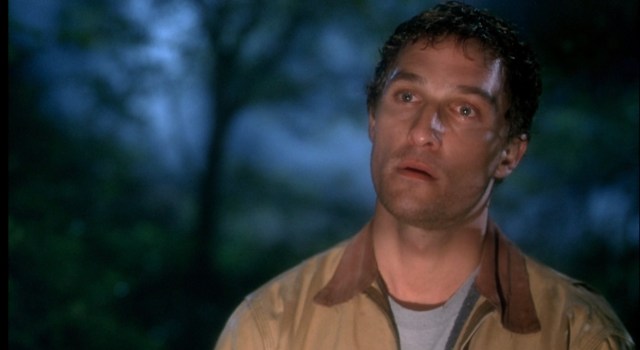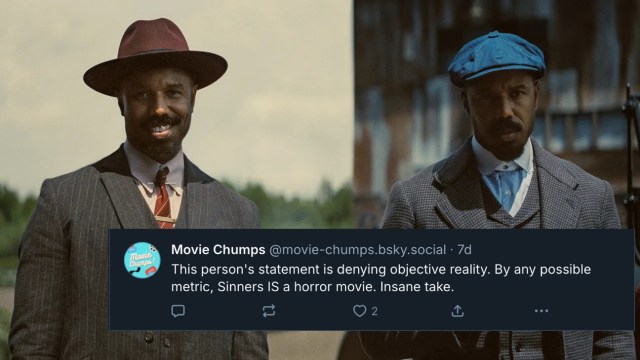Although the world’s first motorcycle was 1885’s Daimler Reitwagen, the phenomenon known as “outlaw biker culture” didn’t emerge until after World War II, when America was on top of the world and its land was covered in road although much of it was undeveloped and unexplored.
Many of the early biker clubs were comprised of World War II veterans with free time and PTSD to burn. There was something about motorcycles that tied into uniquely American ideas of freedom—they were much cheaper than cars, much simpler to fix, it was much easier to navigate through traffic, and, perhaps most importantly, it was much more dangerous. There’s nothing between you and that long open road, and the thrill of danger made the biker lifestyle appeal to a certain form of renegade personality.
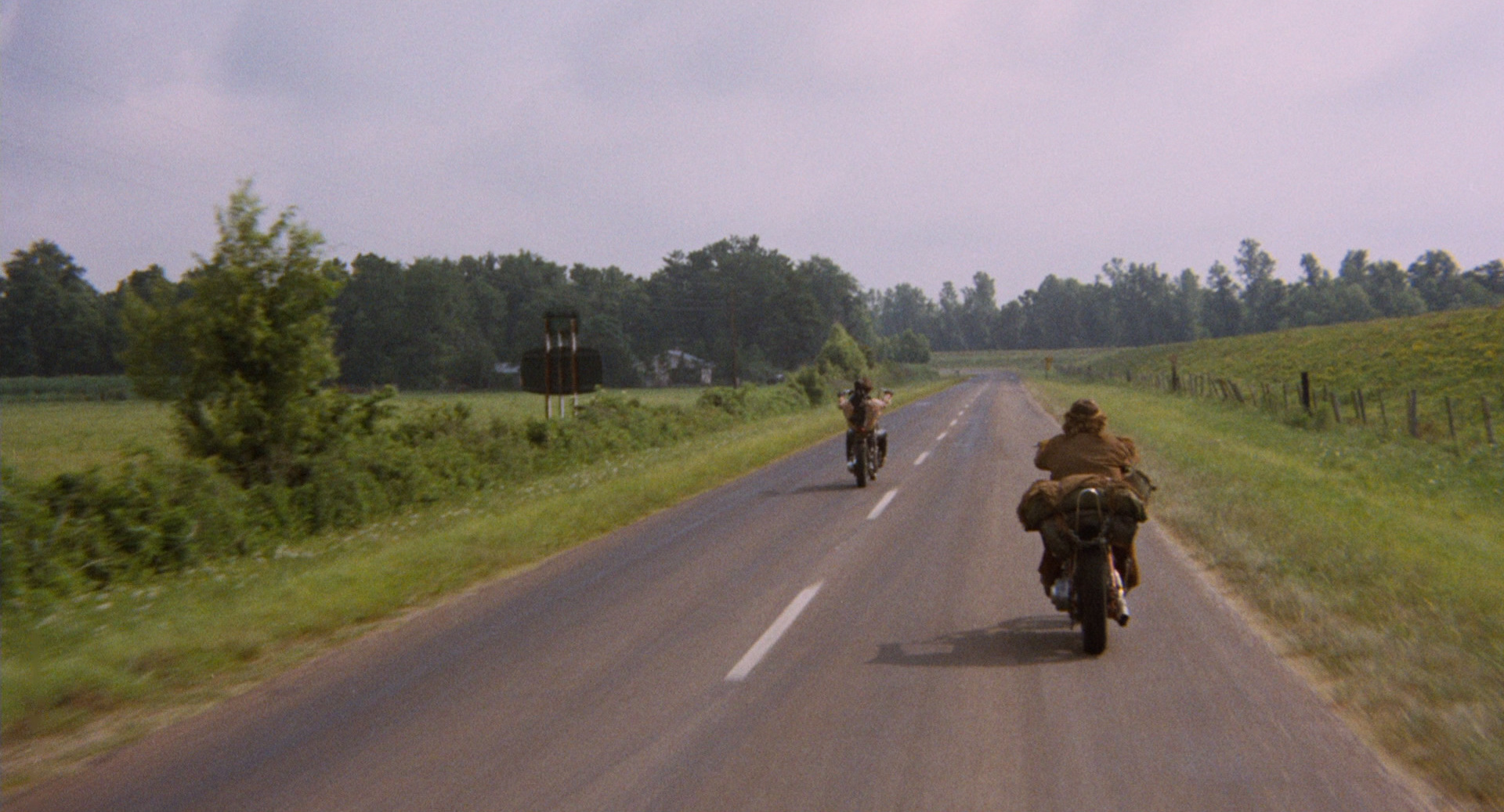
While some of the most prominent “new journalists” of the mid-1960s such as Tom Wolfe and Hunter S. Thompson were attempting to explain the cultural significance of bikers, the biker film genre kicked off back in 1953 with Stanley Kramer’s The Wild One.
Biker movies, like biker culture itself, peaked in the 1960s and 1970s but then started to wane. While most of these films may seem outdated, they serve as cultural studies, especially of the way that youth culture and criminal culture can intertwine.
Here are the most best biker films of all time. Many are based on real-life incidents, and many feature real bikers in the cast. All of them deal with some aspect of biker culture.
Old Biker Movies (1950s – 60s)
The Wild One (1953)
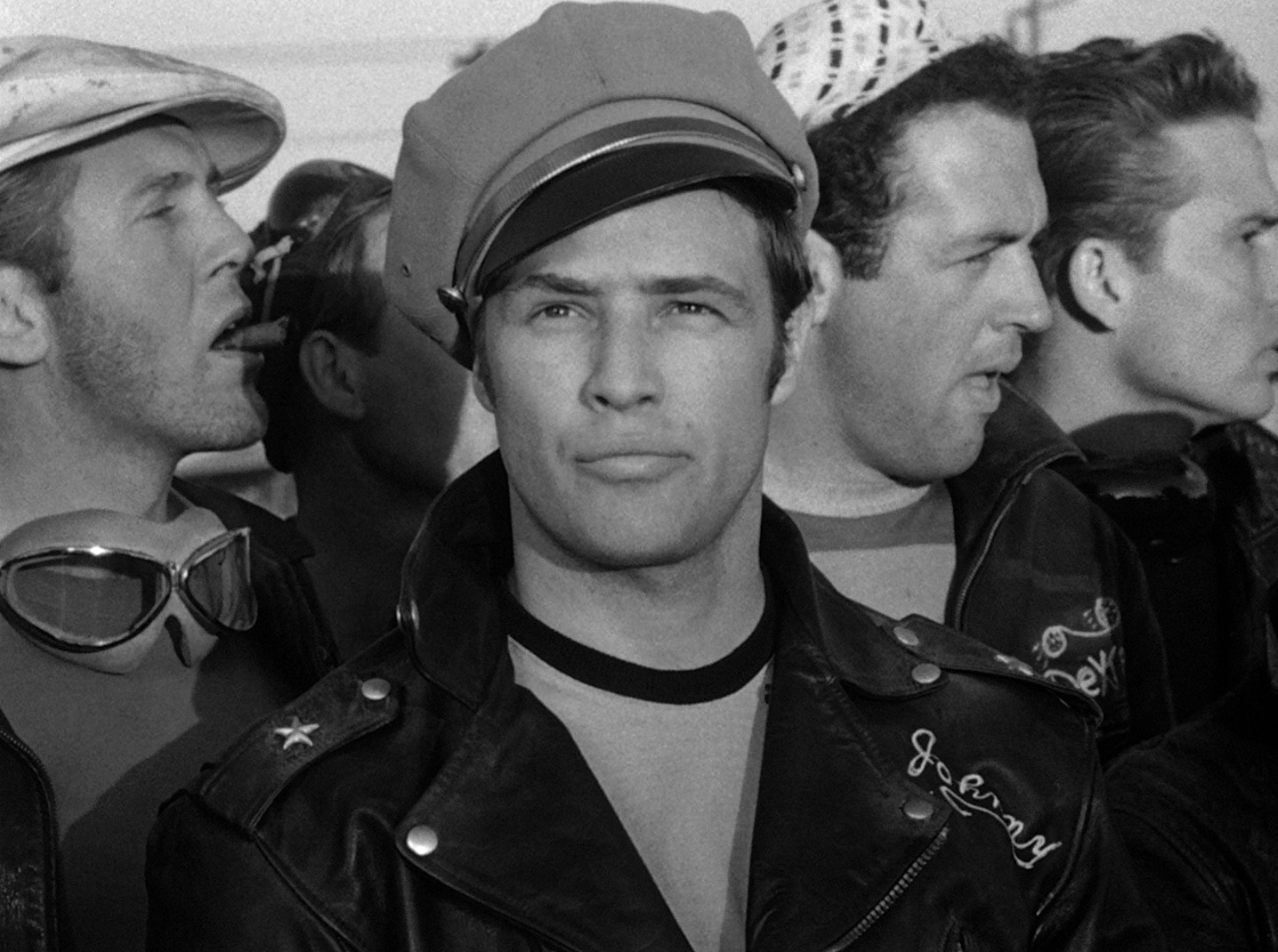
Widely considered the first outlaw biker film, The Wild One is based loosely on 1947’s so-called Hollister Riot, in which an American Motorcyclist Association rally spilled into lawlessness in the small town of Hollister, CA, resulting in sensationalistic national press coverage. In Stanley Kramer’s film, Marlon Brando stars as Johnny Strabler, defiant leader of a biker gang called The Black Rebels, who stream into the tiny desert town of Wrightsville, CA after wreaking havoc at a local racing event. As the bikers bring anarchy to Wrightsville, Johnny finds himself falling for Kathy Bleeker, a wholesome and innocent local waitress who also happens to be the sheriff’s daughter. Events spin even further out of control when a rival biker gang, The Beetles, cruise into town looking for trouble. Real bikers were used as extras in the filming, and the movie’s most iconic line—Johnny replies, “Whaddaya got?” when someone asks him what he’s rebelling against—was an actual line that a biker used when the director asked the same question.
Teenage Devil Dolls (1955)

In this vice-packed and hormone-crazed 1950s teen exploitation movie, Barbara Marks stars as Cassandra Leigh, the lonely daughter of a promiscuous and self-absorbed single mother, who finds identity and camaraderie when she befriends a local group of delinquent bikers. To fit in with her new friends, Cassandra also starts smoking marijuana and finds that she likes it too much for her own good. Vowing to clean up her act, she cuts off all ties to the biker gang and marries her childhood sweetheart, Johnny Adams (Robert Norman), who genuinely loves her but has no idea about her history with bikers and drugs. The marriage has a stabilizing influence on Barbara for a while, but she soon gets bored and finds herself lured into the world of bikers and dope again—only this time she gets addicted to shooting dope. Also released as One Way Ticket to Hell.
Scorpio Rising (1964)
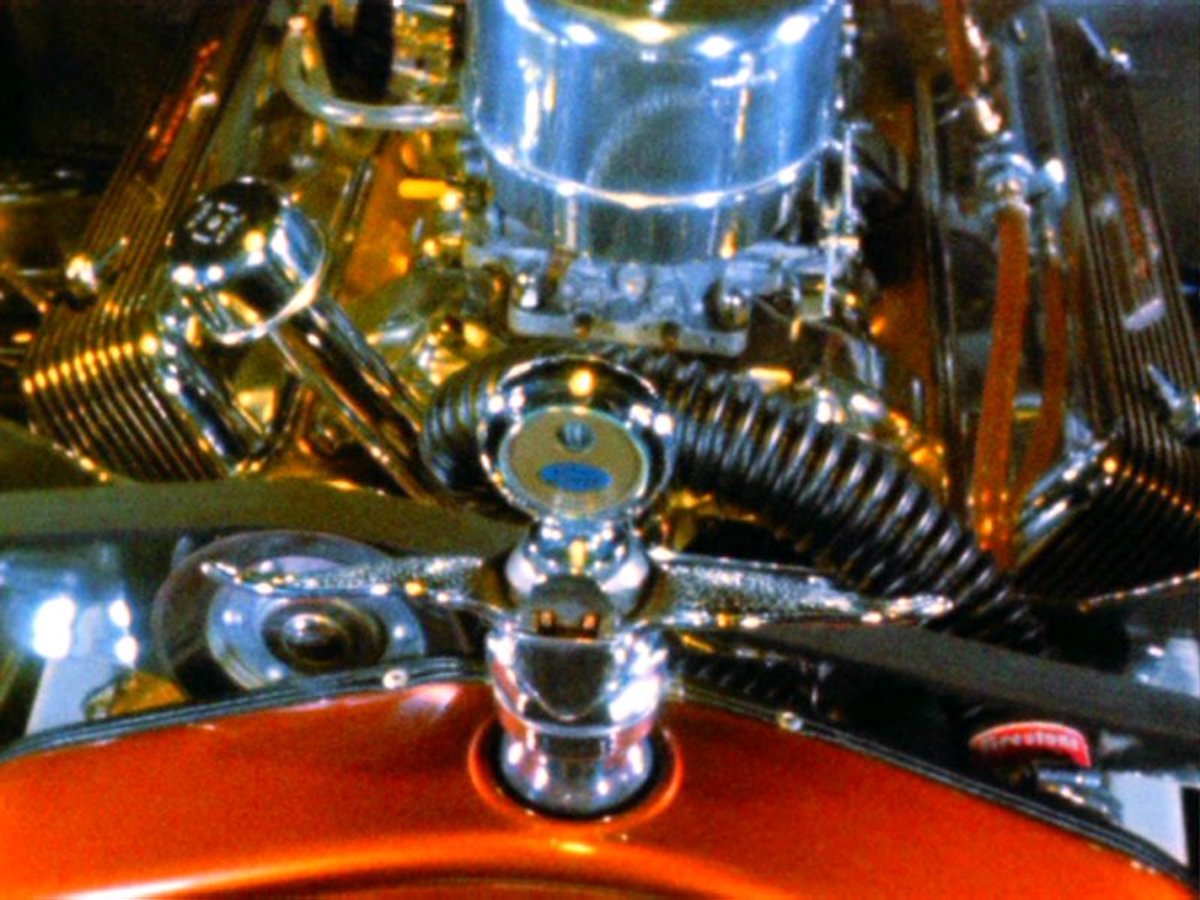
Cult filmmaker Kenneth Anger, who is perhaps most famous for writing the sleazy film-industry tell-all Hollywood Babylon, directed this visually stunning half-hour film that has no dialogue and is instead propped up entirely by a soundtrack of rock ’n’ roll hits from the era. Anger admitted to an interviewer that Scorpio Rising was a campy take on The Wild One, and a clip from the Brando biker epic is briefly glimpsed in one scene. The film begins showing a group of young bikers polishing their motorcycles and preening themselves in anticipation for a wild night out on the town. Symbolism—religious, deathly, homoerotic, and often fascistic—flashes in front of the viewer as mounting montages begin to make clear that the boys are ready for a death ride rather than a joy ride. Film critic Jerry Saravia was effusive in his praise: “It set a whole new precedent for filmmaking in general, in terms of its fast-cutting style, rock n’ roll music montages, rebellious allure of motorcyclists, sex, death, and so on. In fact, I may be so bold as to say that this is the first sex, drugs and rock n’ roll movie ever made….If you are wondering where Martin Scorsese, Quentin Tarantino, Paul Thomas Anderson, Wes Anderson and any filmmaker since, not to mention MTV, got their ideas for their famous use of ironic pop songs as subtext or montage, look no further back than ‘Scorpio Rising.’”
Motorpsycho (1965)
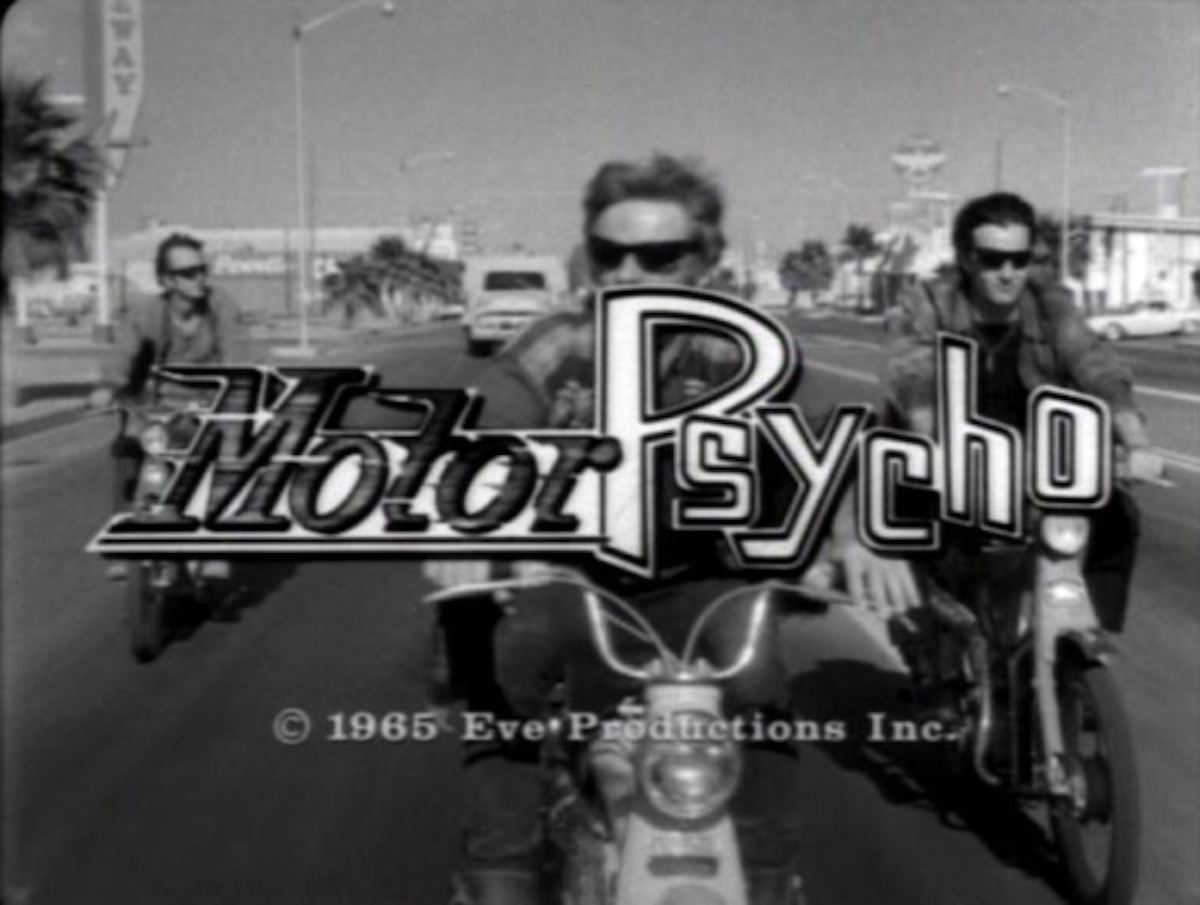
Exploitation filmmaker Russ Meyer got his start as a wartime photographer for LIFE magazine, then as one of the original softcore photographers for Playboy, and finally as a pioneer in sexually charged—but almost never sexually explicit—epics of sex and violence in which women with impossibly large breasts wind up outwitting and dominating dopey men who are led around like fools by their sex drives. Motorpsycho—also stylized as Motorpsycho! and Motor Psycho—is a black-and-white film released the same year as Meyer’s much better known Faster, Pussycat! Kill Kill!, which traced the murderous exploits of three strippers wantonly driving their race cars through the California desert. Haji—one of the three strippers from Faster, Pussycat!—is here, as is the California desert, but the antiheroes in Motorpsycho are three sociopathic moped drivers who roam from town to town raping women. When they finally rape the wife of a veterinarian (Alex Rocco), he goes on a one-man mission of vengeance. Brahmin (Steve Oliver), the leader of the trio of motorcyclists, is thought to be the first fictional character in a Hollywood film to portray a Vietnam veteran with PTSD.
The Wild Angels (1966)

In this biker exploitation flick by Roger “King of the B Movies” Corman that in many ways foreshadowed the more culturally serious Easy Rider, Peter Fonda portrays “Heavenly Blues,” the leader of the “Angels,” a motorcycle gang from San Pedro, CA. Bruce Dern plays his sidekick, “Loser,” who recently had his bike stolen by some Mexicans. When they attempt to retrieve his bike, a battle ensues, and Loser winds up in the hospital. But when the Angels break him out, he dies, and the last half-hour of the movie devolves into a grimy biker’s orgy at his funeral. The Hells Angels, even though several of their members were used as extras, unsuccessfully sued Roger Corman for $5 million because they felt he negatively depicted them in the film. A reviewer for the Cleveland Press seemed appalled by the film: “‘Wild Angels’ is about a bunch of dropouts from the human race who dash about the California countryside on motorcycles, wearing the Nazi swastika and Iron Cross, beating up anyone in the way, smoking reefers swigging whisky, having orgies and generally asserting their rights to their own peculiar brand of freedom….The emphasis is on sex and violence, but mostly violence. Everyone seems to have a nice streak of sadism and there’s a funeral scene that is about as revolting as anything put on film….Sick is what it is.”
The Born Losers (1967)
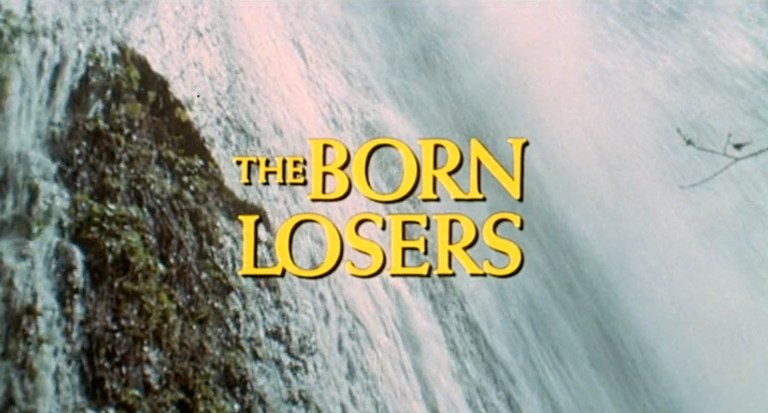
In the early 1950s, actor Tom Laughlin wrote a screenplay called Billy Jack about a heroic half-Native man who fought on behalf of indigenous people. Laughlin would eventually write, direct, and star in four Billy Jack movies—the most successful of which was 1971’s Billy Jack, in which Laughlin used his martial arts skills to protect the students at a progressive high school from local bigoted town folk. The Born Losers was the first of the four movies to star Laughlin in the role and the only one of the four to have a specific biker theme. The film’s title refers to the name of an outlaw biker gang who invade a small California beach town and begin sexually assaulting women there. Billy Jack appoints himself as a vigilante to protect the local women and rid the town of the rapist bikers. The Born Losers is said to be based on a real-life 1964 incident in which several Hells Angels were arrested for raping five girls in Monterey, CA.
Easy Rider (1969)
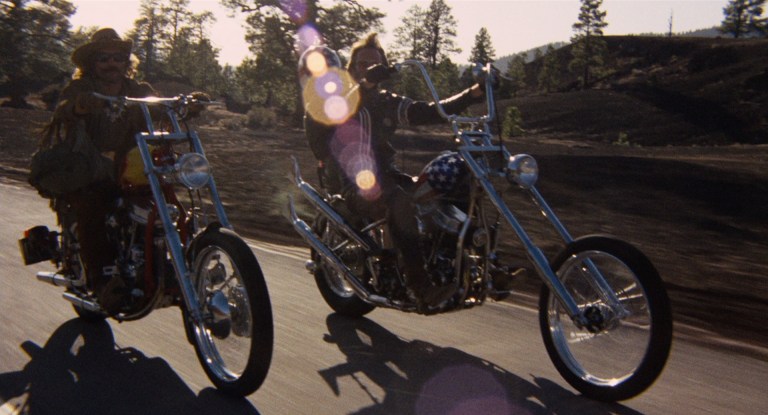
Along with The Wild One, this is the most iconic of all the biker movies as well as the one to most intimately examine the transgressive role that biker culture played in a time of social upheaval. Peter Fonda stars as Captain America and Dennis Hopper portrays Billy, a pair of free-living, long-haired hippies who start the movie by selling a giant stash of cocaine to a rich man in a Rolls-Royce on an airport runway (portrayed by legendary and notorious music producer Phil Spector) before taking off across the United States on a journey of self-discovery en route to the Mardi Gras before they retire with their loot to Florida.
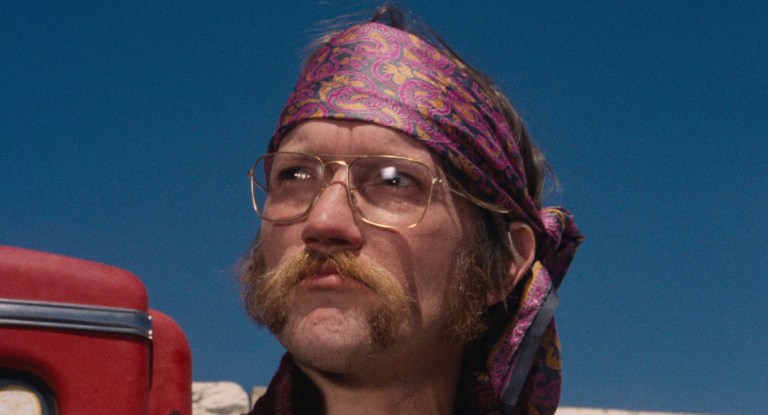
The leader of a hippie commune tries to get Captain America (Peter Fonda) and Billy (Dennis Hopper) to stay.
They spend some time at a hippie commune somewhere in the desert southwest, but the more they inch eastward and into the Deep South, the more they encounter hostility from the hippie-hating Southerners and the more America’s cultural divide is laid bare. In his review, Roger Ebert summarized the cultural appeal of the outlaw biker:
When the Hollywood establishment was dismissing motorcycle movies as an unpleasant low-budget fad, the kids already knew that something was happening here. Because the Hell’s Angel, like the gangster, was a bad guy produced by the society he victimized and was tied to it by a love-hate relationship that created some really neat sex and violence scenes….And someday it was inevitable that a great film would come along, utilizing the motorcycle genre, the same way the great Westerns suddenly made everyone realize they were a legitimate American art form, ‘Easy Rider’ is the picture.
Roger Ebert
70’s Biker Movies
Electra Glide in Blue (1973)
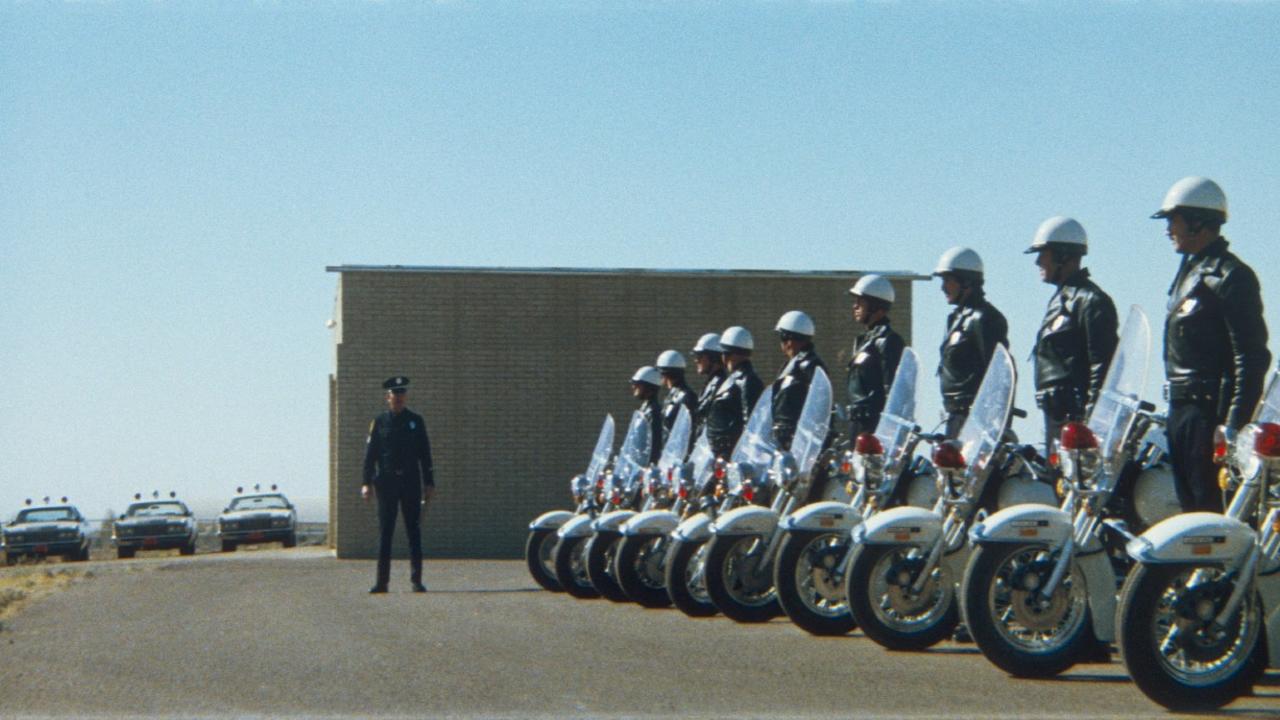
“Electra Glide” was the name of a line of Harley-Davidson police motorcycles that were commonly used in the early 1970s, and “in Blue” refers to the fact that these are cops riding the bikes. Actor Robert Blake, who portrays the stocky but hopelessly short (he’s 5’2” in real life) Arizona motorcycle cop John Wintergreen, thought the film’s title was too vague and says he would have preferred the title Copper Chopper. Wintergreen feels stifled in his role as a lonely desert highway patrolman and seeks the more prestigious job of a police detective, which he temporarily snags after uncovering a clue in a murder case. But the murder case will also drag him into the world of outlaw hippie bikers. The film was inspired by a real-life 1970 incident in Arizona in which a Phoenix motorcycle cop was shot and killed by someone firing from the window of a stolen camper. Film Vault writes, “Electra Glide purports to be a sort of Easy Rider for the motorcycle-cop set as Wintergreen sets out to find out what he’s really made of and what he really wants out of life, but often the movie nearly collapses under the weight of its own good intentions (and pretensions).”
Mad Max (1979)
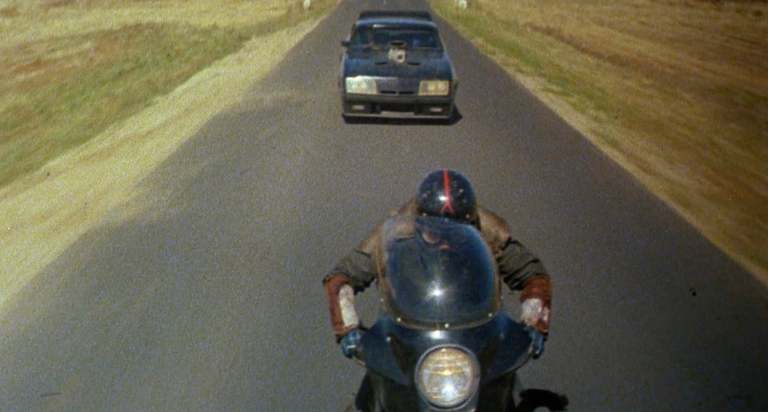
Chaos rules Australia in a post-nuclear world.
In the first film of a series that would make him an international film star, Mel Gibson stars as Aussie highway patrolman “Mad” Max Rockatansky, who was driven mad not only because he’s tasked with maintaining order in a post-apocalyptic world that has devolved into fuel shortages, anarchy, and chaos, but who has been driven insane with the lust for vengeance because members of a nomadic biker gang have murdered his wife, son, and friend. Many of the extras were authentic Australian bikers, some of whom drove the entire 900 miles from Sydney to Melbourne for filming because a limited production budget was unable to cover their airfare between the two cities. Mad Max was followed by The Road Warrior (1981), Mad Max Beyond Thunderdome (1985), and Mad Max: Fury Road (2015).
Quadrophenia (1979)

Legendary classic rock group The Who produced two double albums that were both rock operas and both made into movies—Tommy and Quadrophenia. The 1973 concept album Quadrophenia used a psychological term referring to someone with four distinct personalities in the form of a young Mod named Jimmy, who embodied personality traits of each four members of The Who within his carefree, restless, tortured, and amphetamine-addled soul. The album and film are a cultural study of mid-1960s Mod culture in England, where short-haired and sharp-dressed young men rode around on scooters listening to the latest British bands and stood in stark stylistic contrast with the Rockers, who drove motorcycles and worshiped American greaser music from the 1950s. This real-life cultural clash often ended in violence, and Quadrophenia recreates the legendary beach skirmishes between Mods and Rockers in the English seaside village of Brighton. The AV Club writes, “Quadrophenia acts as a time machine, providing virtual access to the youth movements of the newly mobile British working class…the film resembles a speed-stoked, grittier American Graffiti for the other side of the ocean. Like its 1973 source album, Quadrophenia recreates a stretch of the ’60s when nattily dressed Mods championed English bands (particularly The Who), trolled London streets on Vespa scooters, and contended with their leather-sporting, Yankophilic rivals, the Rockers.”
80s Biker Movies
The Loveless (1981)
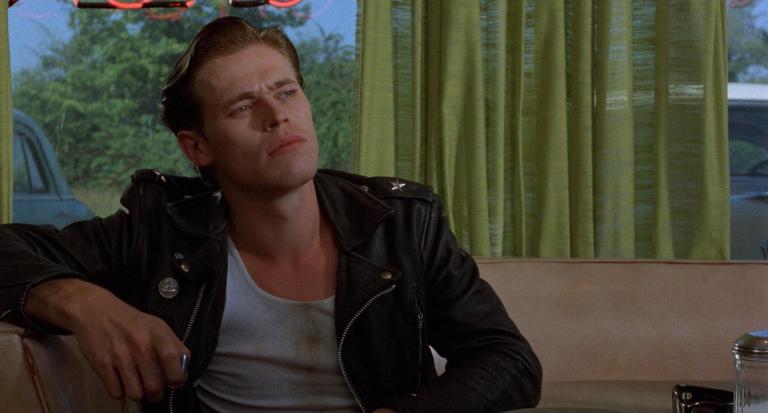
In his first credited film role, Willem Dafoe stars alongside rockabilly music legend Robert Gordon as members of a Southern biker gang in the late 1950s who get stuck in a small town making repairs en route to watch the races at Daytona Beach. The “stuck in a small town, horrifying the locals” trope is familiar in biker films, seeing as how it was central to both The Wild One and Cool As Ice. The film was originally going to be called Breakdown, but director Kathryn Bigelow thought the title was too bland and vague. TV Guide calls The Loveless “An eccentric cross of THE WILD ONE with SCORPIO RISING–with a mise en scene heavily influenced by the paintings of Edward Hopper–THE LOVELESS features a standout rock score by Robert Gordon.”
Mask (1985)
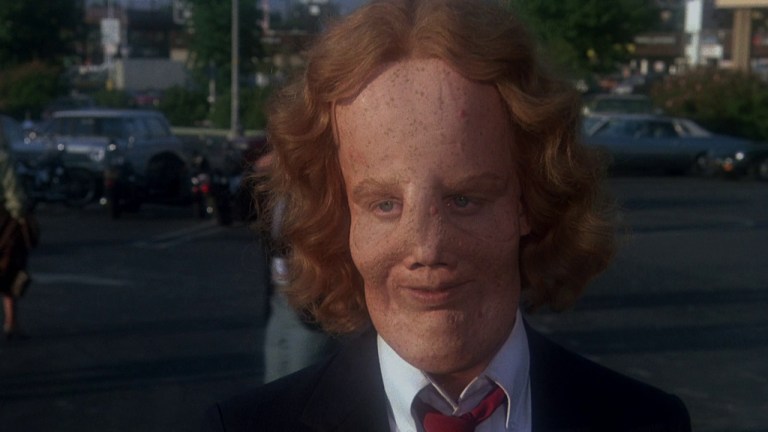
Roy Lee “Rocky” Dennis (1961-1978) was a real-life American teenager afflicted with lionitis, AKA craniodiaphyseal dysplasia, an extremely rare bone disorder that causes calcium deposits to grotesquely distort one’s face. He lived with his mother Rusty in the suburbs of Los Angeles. Rusty was a single mom who ran with a biker gang and was quite open about her drug use and promiscuity. And yet, in an extremely sympathetic portrayal by Cher, one can tell how deeply Rusty loved Rocky (portrayed under a ton of makeup by Eric Stoltz) and would do anything to make his assuredly short life—no one with Rocky’s condition has ever lived into full adulthood—a happy and peaceful one. Although Rusty is surrounded by bikers and and all their dirtbag trappings, their love and respect for him is genuine. Although many biker films tend to render their subjects as either heroes or villains, Mask served to humanize bikers perhaps more than any other film. The real-life Rocky Dennis was a huge fan of Bruce Springsteen, but at the last minute, director Peter Bogdanovich had to swap out the music of Bob Seger because Springsteen’s royalties were prohibitively expensive.
Eye Of The Tiger (1986)
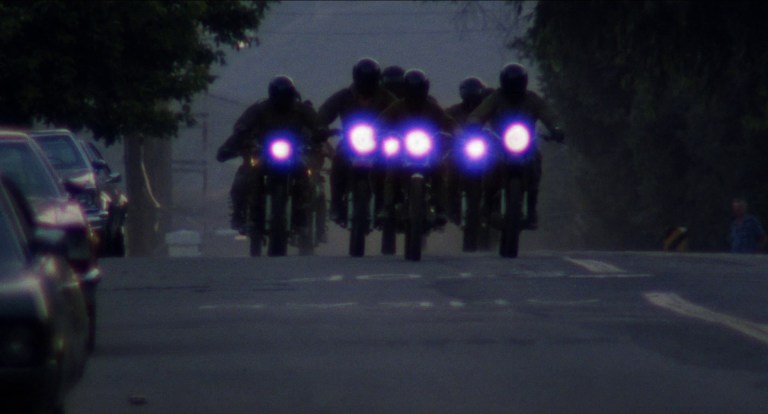
Buck Matthews (Gary Busey) is a Vietnam vet who returns from a prison stint to discover that his beloved Midwestern hometown has been taken over by a ruthless biker gang whose reach extends so far that the local sheriff answers to them. When the gang kills Buck’s wife and rapes his young daughter, he feels hopeless and virtually alone until he teams up with another Vietnam vet (Yaphet Kotto) and a former cellmate to rid the town of its criminal pestilence. Happy Otter 666 writes, “When I sat down to watch EYE OF THE TIGER I was hoping that the action was going be over the top crazy, but it wasn’t. Instead, it’s not even as good as old episodes of ‘The A-Team.’ Zero nudity, ridiculous story and we never get to see any awesome hand-to-hand fighting scenes.”
New Biker Films
Born to Ride (1991)

A true oddity among biker films, Born to Ride stars heartthrob John Stamos as Corporal Grady Westfall, a delinquent biker hired by the US Army to help rescue an American nuclear scientist and his daughter from a secret castle in General Francisco Franco’s fascist Spain at the dawn of World War II. Giving the film a D+, Entertainment Weekly writes, “Wisecracking rebel John Stamos, sporting a disco coif unlikely for 1939, leads an Army biker cavalry against the Nazis in Born To Ride, a hog-bound Hogan’s Heroes. An anachronistic rock soundtrack adds to the disregard for verisimilitude that renders this film a big failure on the most basic dramatic level.” A 2009 poll in PopCrunch listed Stamos as one of the “20 Worst Action Film Stars of All Time” for his role as Grady Westfall.
Stone Cold (1991)
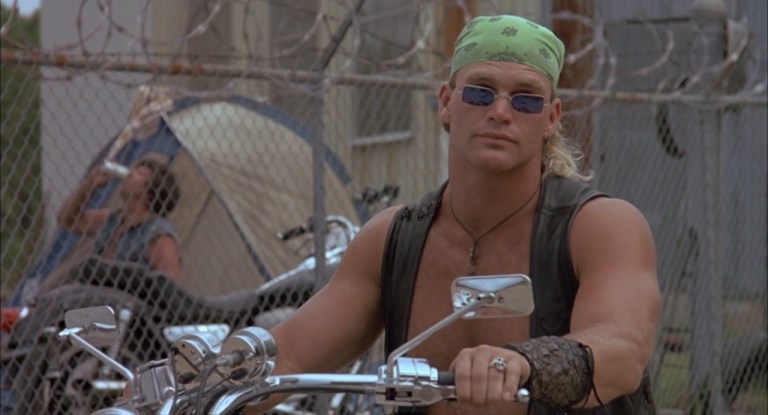
The marketing campaign around Stone Cold touted it as the first major-studio biker film since 1969’s Easy Rider. Heisman Trophy-winning football star Brian Bosworth, who was a devastatingly effective college linebacker but whose much-ballyhooed entrance into the NFL was cut short due to injuries—which many saw as poetic justice, as Bosworth had a habit of running his mouth—stars as Joe Huff, an Alabama cop blackmailed by the FBI into infiltrating an extremely violent Mississippi biker gang known as “The Brotherhood.” The Washington Post wrote, “What the world needs now, apparently, is another overly muscled, stone-faced dunderhead hero, and Bosworth certainly fits that description….Most of ‘Stone Cold’ is plain silly, regurgitated biker-film cliches underscored with awful hard rock cliches….’Stone Cold’ is ultimately most likely to provoke another 22-year hiatus in major-studio biker-action films.”
Cool As Ice (1991)
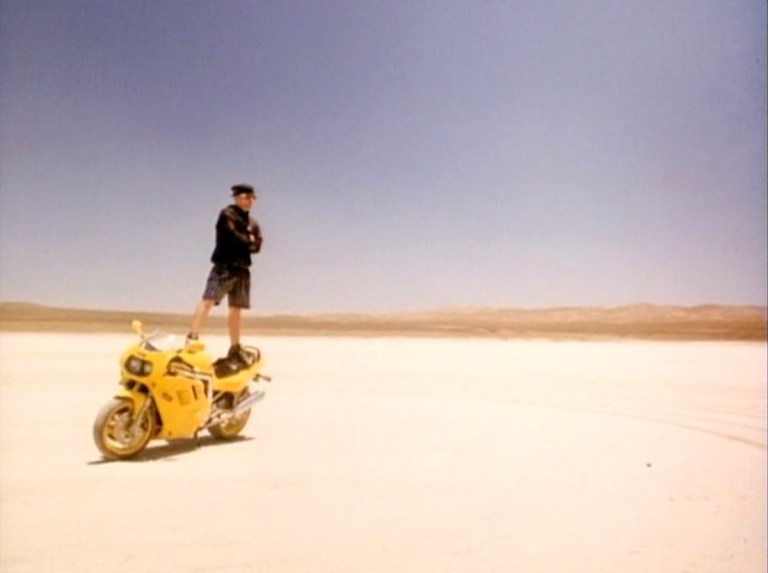
Robbie Van Winkle is best known to the world as Vanilla Ice, a white rapper whose 1991 debut album sold 16 million copies and then who sank into almost total obscurity among howling choruses accusing him of being a culturally appropriating poseur. But this film—like so many quickly cobbled-together vehicles meant to capitalize on a teen idol’s newfound superstardom—was made right before Ice’s precipitous downfall. He plays “Johnny,” the apparent leader and only Caucasian member of a small inter-gender biker gang who get stranded in a tiny California town when one of the gang has mechanical problems with their bike. Johnny courts a wholesome straight-A student named Kathy, who is beguiled by his “bad boy” mannerisms, but unbeknownst to both Johnny and Kathy, her parents are in the federal witness protection program and are being stalked by mobsters. The Washington Post writes, “Having established that he can’t rap or dance, Vanilla Ice now adds acting to his resume — call it the tri-imperfecta of pop….The film itself is a cross between an after-school special and MTV video, melding threadbare plot with colorful visuals and delivering a message, which is, basically, Vanilla Ice is cool, you know?…In one of the film’s wittiest exchanges, Ice tells Kathy, ‘Drop that zero and get with the hero.’ Ooh, that Ice!”
Ghost Rider (2007)
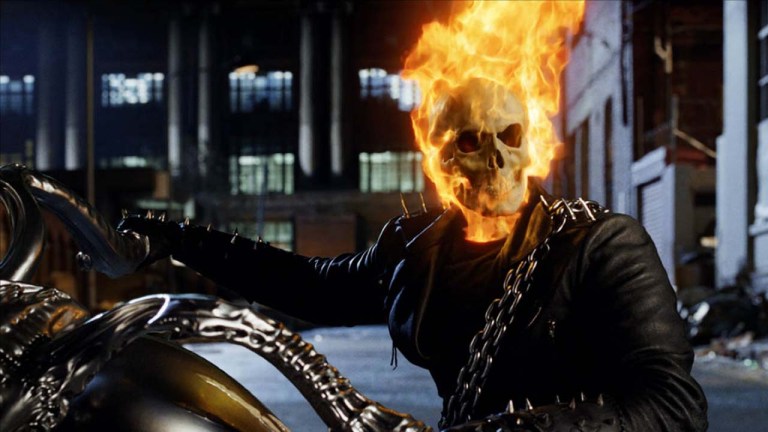
The Marvel comic-book character Ghost Rider, AKA Johnny Blaze, sold his soul to the Devil to spare his father’s life from cancer; in return, Johnny is condemned to becoming the Devil’s bounty hunter—he basically tracks down sinners, takes them into custody, and drags them down to hell. In the film version, Johnny Blaze (Nicholas Cage) is swindled by the Devil (Peter Fonda), and his father dies in a motorcycle accident instead of dying from cancer. But the Devil then offers Johnny his freedom if he agrees to kill Blackheart, who is the Devil’s son and is misbehaving even a little too much for the Devil. Calling the film “an unholy mess,” Reel Views writes, “Peter Fonda wears makeup that causes him to look embalmed while providing a voice that sounds like a bad Clint Eastwood impersonation.” It also notes some inherent plot contradictions: “a servant of Satan becomes the apparent weapon of God. To further muddle things, the Devil isn’t really that bad, at least when compared to his son….”
Hell Ride (2008)
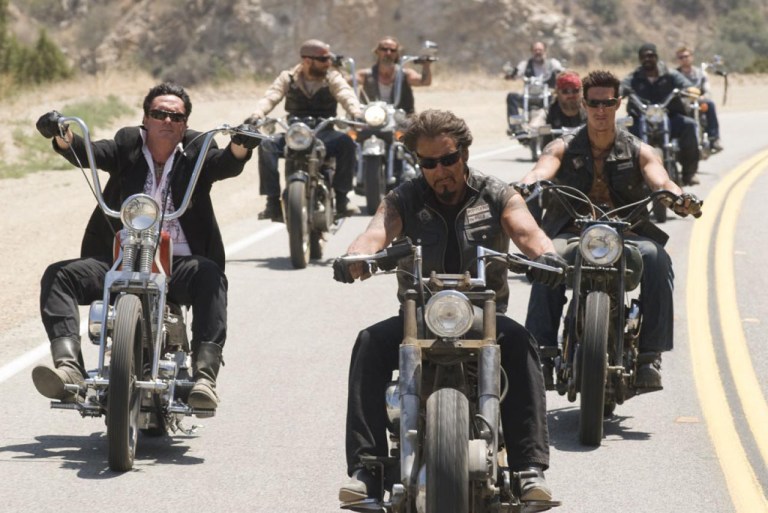
Originally called Pistolero, this biker film pits two aging biker gangs, the Victors and the Six-Six-Six’s, against one another in a decades-long murderous rivalry between the gangs that started back in 1976 when members of one gang assaulted the girlfriend of the other gang’s president. Biker-movie icons David Carradine and Dennis Hopper make cameos, with Hopper using his own motorcycle. Roger Ebert wrote, “The movie was executive produced by Quentin Tarantino. Shame on him. He intends it no doubt as another homage to grindhouse pictures, but I’ve seen a lot of them, and they were nowhere near this bad….I read an article the other day saying the average age of motorcyclists is going up. Judging by ‘Hell Ride,’ the average age of motorcycle gang members is approaching the Medicare generation, not that many will survive to collect the benefits.”
More Biker Gang Movies
- Motorcycle Gang (1957) when an outlaw biker named Nick returns from 15 months behind bars, he is saddened to see that his former crew has turned into a respectable “motorcycle club.”
- The Hot Angel (1957) an obscure drive-in B-movie filled with switchblades, hot girls, fast cars, fistfights, and biker gangs.
- Beach Blanket Bingo (1965) is one of five Frankie Avalon/Annette Funicello beach-party movies with the recurring character of “Eric Von Zipper” (Harvey Lembeck), the leader of a bumbling gang of bikers who are clearly modeled on the Black Rebels from The Wild One.
- Hells Angels on Wheels (1967) Jack Nicholson directed this fictional drama that was marketed as “THE SHATTERING TRUE STORY OF THE HELLS ANGELS OF NORTHERN CALIFORNIA!”
- She-Devils on Wheels (1968) Herschell Gordon Lewis, the “Godfather of Gore,” took a break from his usual subject matter to direct this low-budget homage to a fictional group of badass lady bikers.
- C.C. and Company (1970) football superstar Joe Namath stars as a man who forms an uneasy friendship with a biker gang.
- The Pink Angels (1971) Crossdressing bikers pull into Los Angeles and cause havoc.
- Darktown Strutters (1974) a blaxploitation film featuring four sassy female bikers.
- Roadside Prophets (1992) two friends travel throughout the desert Southwest to scatter their dead friend’s ashes.
